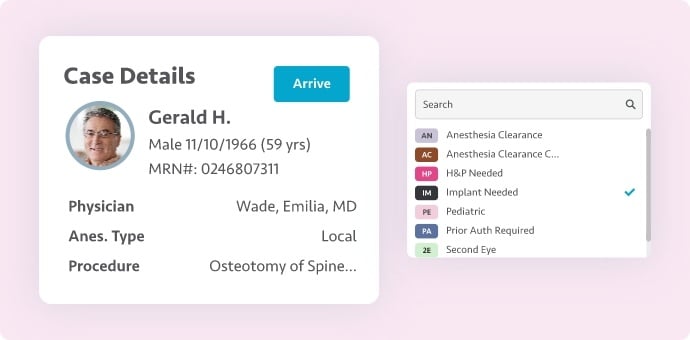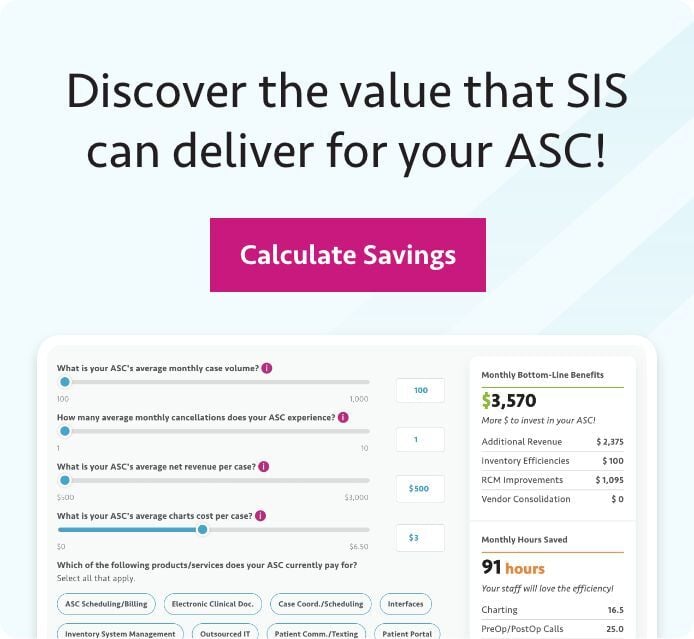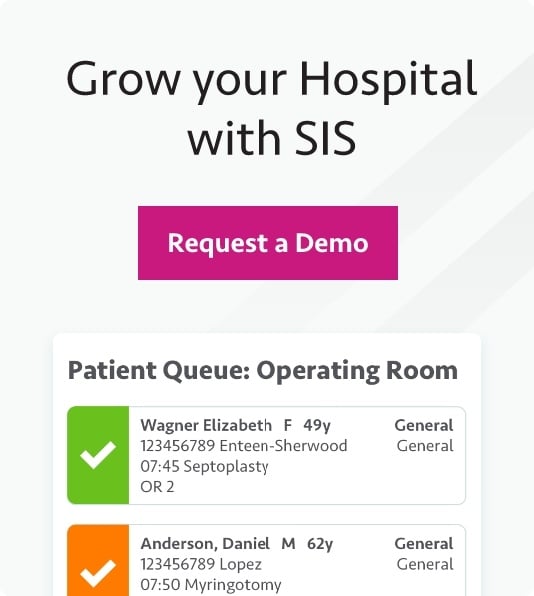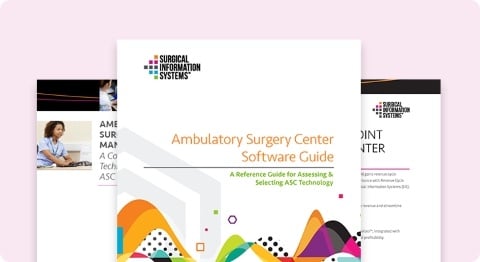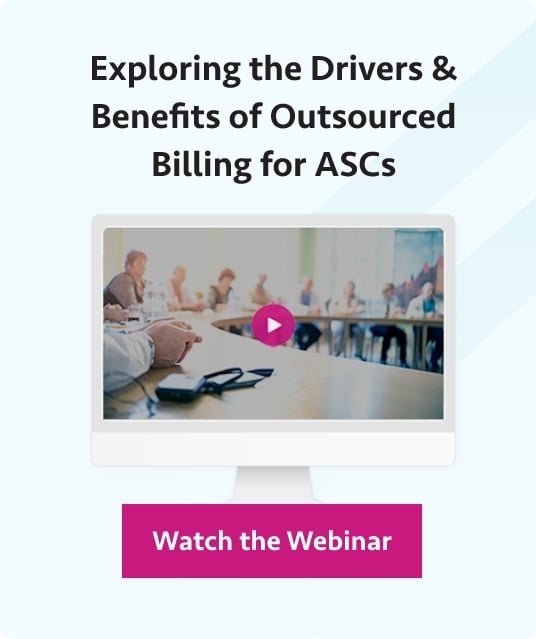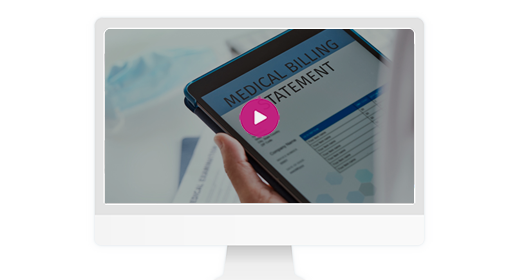
Collecting from patients has been a growing challenge for ASCs over the past several years — growth that essentially mirrored the increase in patient financial responsibility after insurance. As more of the financial responsibility for healthcare costs has shifted to patients, surgery centers have needed to shift more of their attention and resources to collecting these higher amounts — and trying to do so while taking into account the stress and struggle for some patients in covering personal expenses.
Unfortunately, the COVID-19 pandemic has made challenges around patient collections worse as many patients have experienced financial distress associated with the public health emergency, such as the loss of a job; changes to healthcare coverage, including loss of health insurance; increases in expenses; and health issues that have contributed to loss of income.
Despite the growing challenges facing surgery centers and their patients, ASCs must ensure they have processes in place that help them collect what patients owe for their care. This is not only important for an ASC's viability, but most payers include requirements for their contracted providers to collect patient deductibles, co-pays, and co-insurances.
By following these 10 best practices, you can help your ASC strengthen its point-of-service collections success rate and in a manner that may improve — or at least not harm — patient satisfaction with their surgical experience.
1. Understand the COVID-19 impact
To put your staff in a better position to engage in sympathetic, productive conversations with patients around financial responsibility and collect what your ASC is owed, understand the various ways the pandemic has likely affected your patient community. This would include those examples provided above as well as address changes due to moving, health conditions worsened by the postponing of care, and patients spending more on care to catch up on services that were skipped or delayed.
2. Revise processes to address COVID-19 effects
If your point-of-service collections processes were performing well prior to the pandemic, they should largely still serve you well today. However, you may want to consider ways to further strengthen them to take into account the noted effects of the pandemic.
For example, if you don't already verify insurance on the day of the procedure, you may want to add this to your process to better help ensure you catch recent changes to coverage. As another example, if you do not already offer payment plans and/or financing loans — both of which are ways that patients can spread out payments for their care — you may want to consider adding one or both of these options to help support the increasing number of patients who have experienced income disruption and/or increased expenses.
3. Engage stakeholders
Patient collections is not just an area of concern for your collectors. All members of an ASC's staff, including surgeons and anesthesia providers, and the staff of your ASC's affiliated physician practices should understand the financial and compliance importance of point-of-service collections. In addition, stakeholders should know where to direct patients when they have questions, concerns, or complaints about their financial responsibility. If stakeholders provide incorrect information to patients, it could make collections more difficult and hurt patient and provider satisfaction.
4. Follow your processes — as long as they work well
Like most tasks performed in an ASC, patient collections should follow pre-defined processes that, once implemented, staff follow consistently. This helps ensure staff know how to effectively collect from patients, understand how to properly answer questions and address concerns (and never "wing" a response), and know when a collections matter must be elevated to management.
5. Learn from challenges and revise processes accordingly
While pre-defined point-of-service collections processes are important, ASCs should always be looking for ways to further refine and strengthen processes. There are many ways one can learn about opportunities for improvement. Perhaps the most significant is to assess when collections do not go as planned, whether that means patients expressed dissatisfaction with an experience, the wrong amount of money was collected, or any other challenge. The assessment should look at what went awry or wrong, if anything, and what could or should have been done to avoid problems and mistakes.
Other ways to learn about and identify good collections practices include taking advantage of educational opportunities (e.g., participating in webinars, reading articles, listening to podcasts), networking with other ASCs to learn how they approach collections and have overcome challenges, and performing quality assurance and performance improvement (QAPI) studies on patient collections processes and performance.
6.When revising processes, prioritize training
Any time you revise your point-of-service collections processes, allocate enough time to effectively train your staff on what's changed, why the change(s) was made, and what they need to do going forward. If a change to the process does not need to occur immediately, include role-playing as part of your training. This will give staff the opportunity to run through your revised processes a few times and ask questions before the processes are brought over to patient interactions.
7. Remember: "financial challenge" will vary from patient to patient
Train staff to approach every patient encounter that concerns money with empathy and to understand the importance of responding appropriately to the range of reactions they may receive from patients when discussing a bill and financial responsibility. What is considered a financial challenge for one patient may not be a concern for another. A bill for $10 could upset one patient whereas as bill for $1,000 may not upset another patient.
In addition, some patients may be experiencing new or heightened financial challenges and could be struggling with how to handle their situation. Some patients may feel embarrassed by their predicament. As a care provider, patients will often expect an ASC and its staff to be supportive of any situation, including those involving finances. If patients believe they are not getting the appropriate level of support, they may react negatively.
8. Take sensitive collections conversations private
Discussions about point-of-service collections should always be performed in private. If your ASC's space does not currently permit such level of confidentiality, make sure there is a private space available to which staff can move a patient collections conversation should they ever have a concern about the direction the conversation is heading. Privacy can help a patient feel comfortable explaining their financial situation and talking about payment options. In addition, moving the conversation to a private room will keep a potentially emotional and charged conversation from taking place in front of other patients.
You can avoid the need for many such discussions by developing processes to effectively collect from patients prior to their arrival for the procedure.
9. Include billing experience in satisfaction surveys
A great way to gain a better understanding of how patients view your collections process is to include the billing experience in your patient satisfaction surveys. For any patients who express dissatisfaction with their experience, reach out to find out why and see if there is anything you can do to rectify the situation. This interaction can help you learn ways to improve your patient collections processes and possibly keep a patient from leaving a negative review of your ASC because of this experience. Even if the procedure went well, a bad billing interaction can sour a patient on their entire visit.
10. Set a collections goal of 100%
While it may be difficult to collect every dollar owed by patients, your point-of-service collections goal should be 100%. With the right processes in place, collecting in full will become the norm. If your current collections success rate is considerably below 100%, hitting this figure right away may prove difficult. However, you can build toward it over time, perhaps supporting your efforts with a QAPI study.




